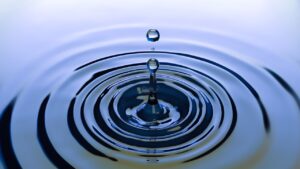When living in or visiting Hoboken, New Jersey, one of the most common questions you might ask is: “Is the water safe to drink?” This is a valid concern, as the quality of drinking water is crucial for health and wellbeing. In this blog post, we will explore the safety of drinking water in Hoboken, focusing on water sources, treatment processes, and the measures taken by local authorities to ensure water safety.
Hoboken’s Water Supply: An Overview
Hoboken’s water primarily comes from two sources:
- The Passaic River (New Jersey)
- The Hackensack River
While both rivers serve as the main water supply, the city uses advanced filtration systems to treat the water before it reaches residents. The treatment process includes purification, filtering, and ensuring that the water meets safety standards for consumption.
Ensuring Water Safety: Regular Testing and Filtration
To guarantee the safety of the water, Hoboken undergoes regular testing for a variety of potential contaminants. These include:
- Chlorine Levels: Ensuring the right amount of chlorine is used to disinfect the water.
- Bacterial Contamination: Testing for harmful bacteria that may pose health risks.
- Lead and Heavy Metals: Checking for the presence of metals like lead that can be harmful.
- pH Levels: Ensuring the water’s pH is within a safe range for drinking.
Advanced filtration systems remove harmful substances from the water, ensuring it is safe for consumption.

Is the Water Safe to Drink in Hoboken?
Based on numerous tests and reports, Hoboken’s tap water is safe to drink. The water meets federal and state water quality standards and is regularly monitored for any contaminants. In fact, the city’s water quality often exceeds the required health guidelines.
However, if you are concerned about the water quality or if you live in an older building with old pipes, using a water filter could provide an additional layer of safety and peace of mind.
Reports and Updates from Local Authorities
Every year, the city of Hoboken publishes a Water Quality Report, which provides residents with updated information about the water supply. The report includes data on the water quality, contaminants tested for, and any health risks that may be present. You can access this detailed report from the official city website.
Additionally, you can always refer to the Environmental Protection Agency’s (EPA) guidelines and water quality standards to learn more about safe drinking water practices.
External Link: EPA – Water Quality Reports: EPA Water Quality
What Can You Do to Ensure Water Safety?
Although Hoboken’s water is considered safe to drink, there are steps you can take to ensure even higher safety standards:
- Use a Water Filter: If you want additional assurance, investing in a high-quality water filtration system can remove any potential impurities that may remain in the water.
- Check for Local Alerts: Keep an eye on local news or government notifications in case there are any water quality issues due to storms, construction, or other events.
Conclusion
Hoboken’s tap water is generally safe for drinking, thanks to extensive testing and the use of advanced treatment technologies. While local authorities work hard to maintain water quality, individuals can take extra precautions by using water filters to ensure purity. It’s always important to stay informed through annual water quality reports and to check for any temporary issues that might affect water safety.
FAQ Section
Q: Is Hoboken’s water safe to drink?
A: Yes, the water in Hoboken is safe to drink, as it meets the required safety standards. However, using a water filter can provide extra assurance.
Q: How is the water tested for safety?
A: The water is regularly tested for contaminants like chlorine, bacteria, lead, heavy metals, and its pH levels.
Q: Can the water in Hoboken become contaminated?
A: While the water supply is typically safe, contamination may occur in rare situations, such as during natural disasters or if there are issues with local infrastructure. The city takes quick action to address these concerns.
